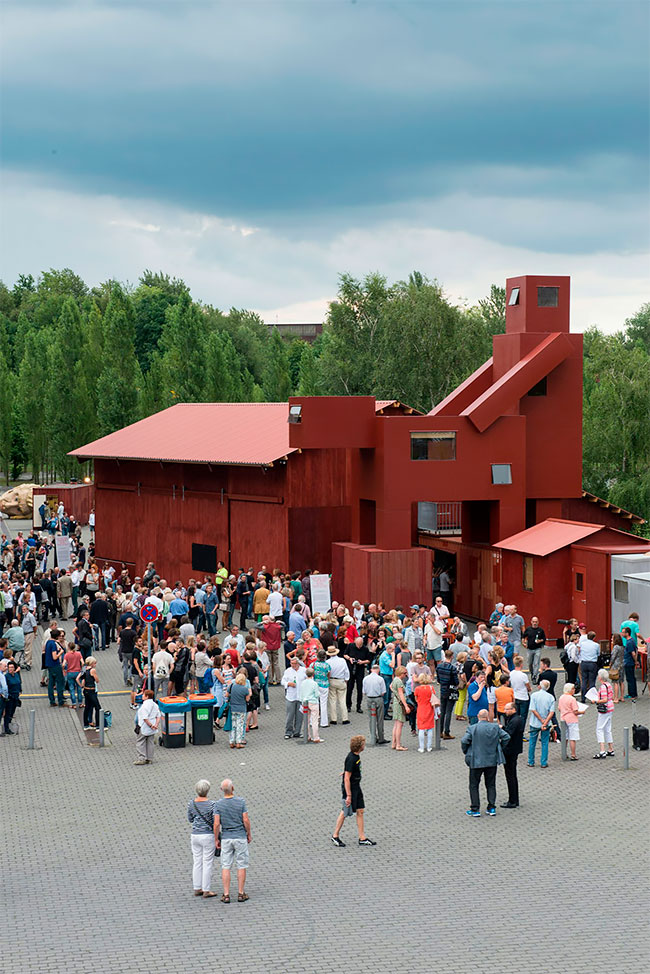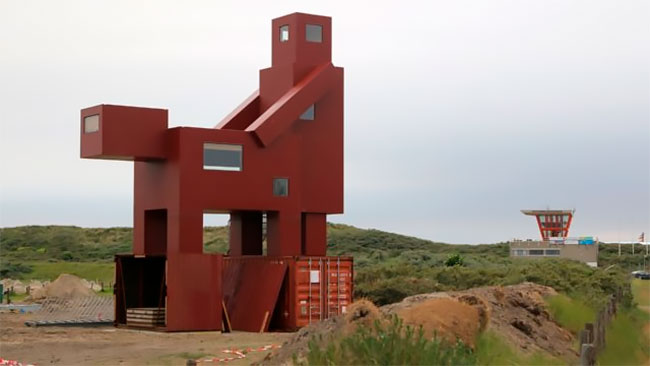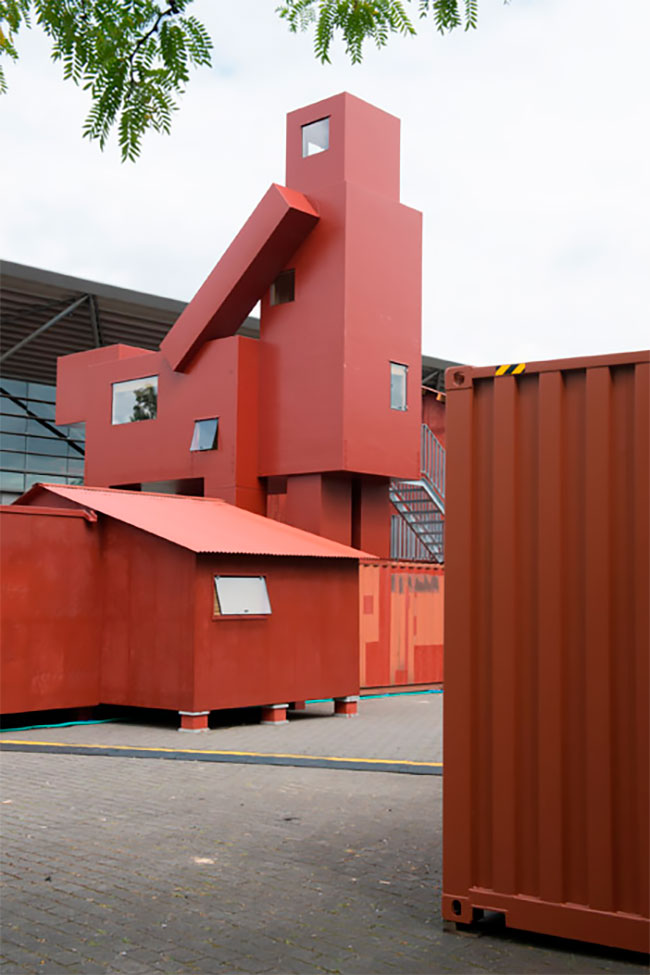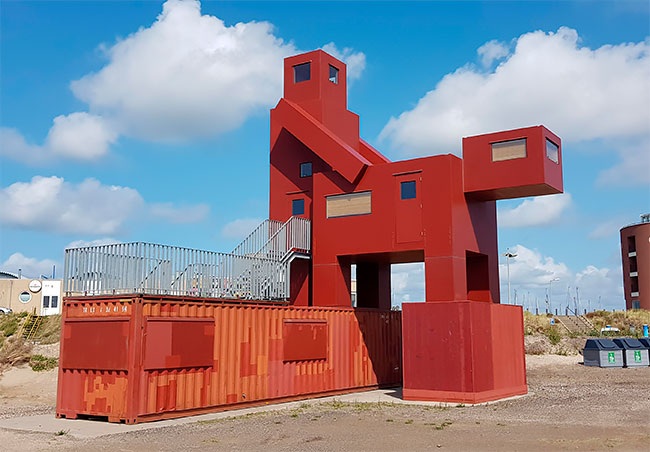Domestikator: This Stunning Sculpture Looks Like Two Buildings Having Sex
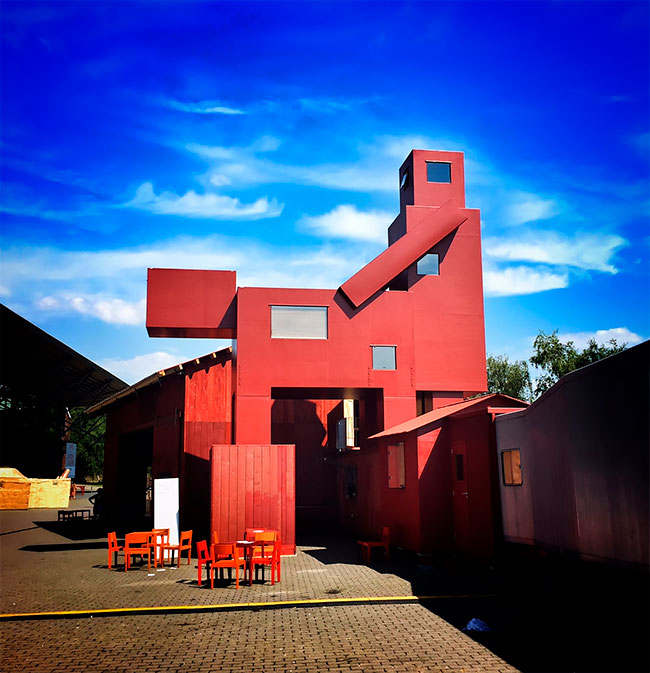
Dutch artist Joep van Lieshout’s Domestikator, a model of a modernist building that happens to be shaped like a man penetrating a dog, makes me worry that I offered the wrong advice. Raunchy art in the adult and sophisticated context of a gallery – if necessary with warnings about its content – is one thing. Obscenity in public space where people of all ages will see it without making any choice to do so is another.
More: Joep van Lieshout, Instagram, Facebook h/t: theguardian

Domestikator is a large scale artwork that serves as a totem, a temple and a beacon. It symbolizes the power of humanity over the world and pays tribute to the ingenuity, the sophistication and the capacities of humanity, to the power of organisation, and to the use of this power to dominate the natural environment.
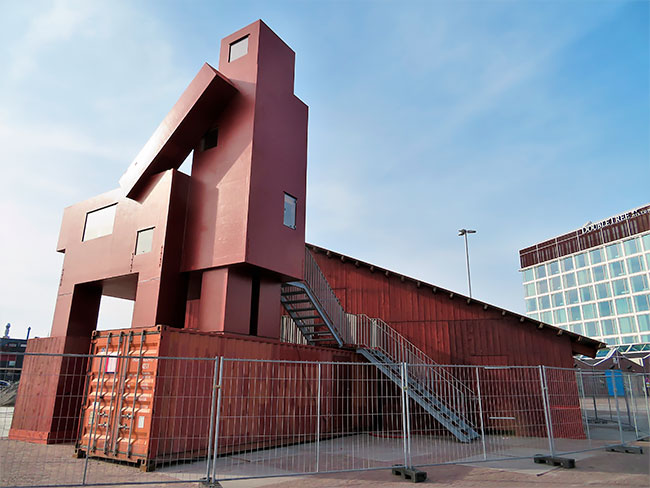
In order to support 7 billion people, agriculture has become an industry, with factory farming and genetic manipulation a necessity. This provides us with an ethical dilemma, as this kind of farming seems to border on abuse. At the same time, the literal abuse of animals, bestiality, is one of the last remaining taboos. Why is it that treating an animal like a fellow human is an unspeakable act, whilst treating an animal like a resource for industrial production is the norm?

Domestikator is part of the larger installation The Good, the Bad and the Ugly. The Good the Bad and the Ugly is a temporary settlement in Bochum, Germany that was designed for the Ruhrtriennale, a festival for theatre, music, dance and arts.
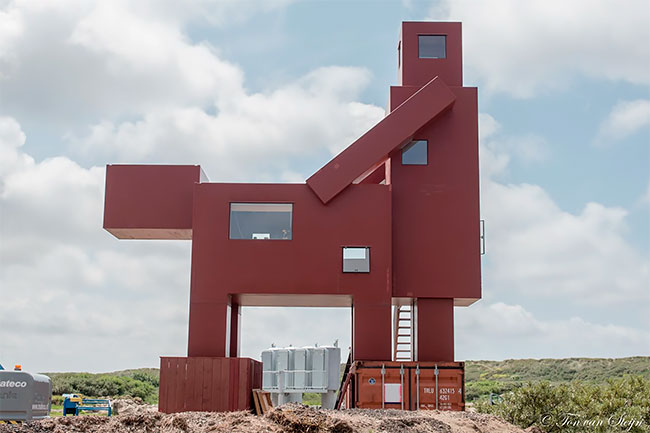
“The piece is about the domestication process, how humans control the world, nature, how they start farming. Boundaries are always being pushed as part of this process. Today, we are on the brink of very big changes, with robots, AI, genetic manipulations, big data, which will all have a huge impact on our society. So what I’m trying to do with my work is to start a conversation about it. What do we think about it? Are machines going to take over? Will decisions affecting society be made just on the basis of statistics? I want people, scientist, critics, architects, politicians to start thinking about these issues. Should we guide these processes, enhance them, control them?” says Joep van Lieshout.
